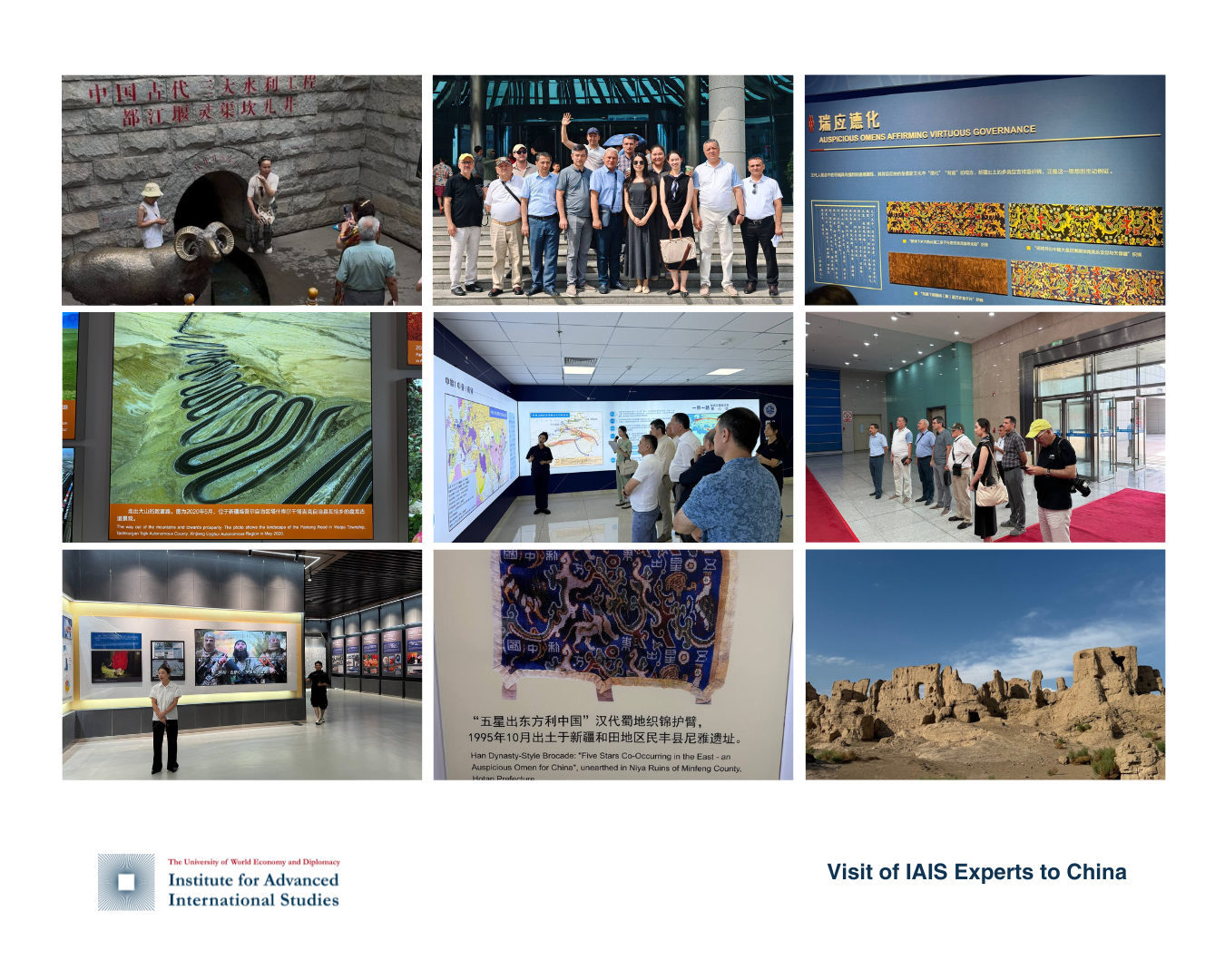
From August 1 to 7, at the invitation of the Embassy of the People’s Republic of China in the Republic of Uzbekistan, a delegation consisting of representatives of government and academic institutions, including employees of the Institute for Advanced International Studies (IAIS), visited the Xinjiang Uygur Autonomous Region (XUAR) of the PRC. The trip was organized as a press tour with the aim of familiarizing participants with the socio-economic development of the region, interethnic relations, and the cultural heritage of Xinjiang.
An important part of the program was devoted to cultural and historical sites. The delegation visited the Xinjiang Museum, whose exhibits reflect the rich historical and ethnographic heritage of the region, as well as archaeological sites, including the ruins of the ancient city of Jiaohe in Turfan, which are included in the UNESCO World Heritage List. During the trip, participants also learned about the unique underground water supply system known as qiars, the winemaking traditions of Turfan, the craft heritage of the village of Tuyugou Mazha, and modern ethnocultural projects aimed at preserving the diversity of the peoples of Xinjiang.
During the visit, the delegation also visited a number of key infrastructure facilities, including the Urumqi International Dry Port and the Alashankou Terminal on the Chinese-Kazakh border. Representatives of the Chinese side presented information on the region’s transport and logistics potential, including the development of multimodal centers, integrated customs zones, international trading platforms, and specialized industrial clusters. Particular attention was paid to the dynamics of Xinjiang’s foreign trade, which showed significant growth in the first half of 2024, as well as the expansion of transport routes within the framework of the Belt and Road Initiative.
The China-Kyrgyzstan-Uzbekistan railway project was considered separately, which the Chinese side identified as an important element in the development of relations with Central Asia, contributing to the diversification of trade and economic routes. The prospects for strengthening interregional cooperation, including the development of ties between sister cities, were also discussed.
The visit facilitated the exchange of information and strengthened contacts, as well as provided an opportunity to learn about the current directions of economic and infrastructure development in Xinjiang, its role in international transport corridors and foreign economic relations.